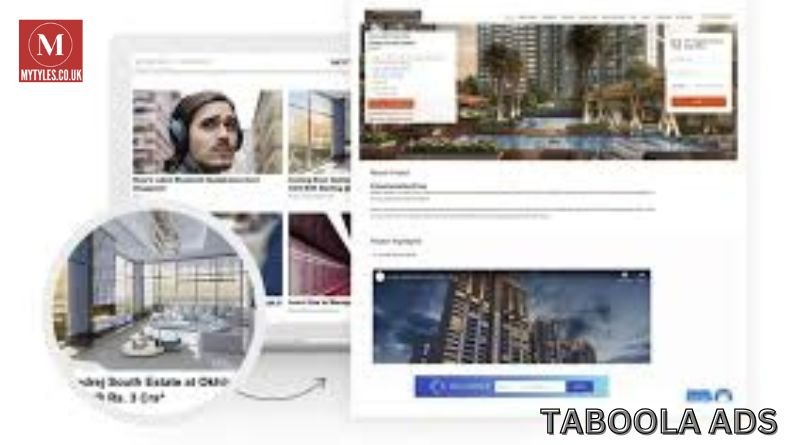In the rapidly evolving digital marketing landscape, Taboola ads have emerged as a dominant player in native advertising. With their ability to seamlessly integrate content with the design and flow of a website, Taboola ads offer a unique opportunity for businesses to reach targeted audiences in an organic manner. This article delves into the fundamentals of Taboola ads, exploring their benefits, strategies for success, and potential challenges, providing a comprehensive guide for businesses looking to harness this platform effectively.
What Are Taboola Ads?
Taboola ads are a form of native advertising that appear as recommended content on various websites. Native ads are designed to blend with the appearance and format of the hosting site, making them less intrusive than traditional banner or pop-up ads. Taboola connects advertisers with a wide network of publishers, enabling brands to showcase their products, services, or content to millions of users worldwide.
These ads are often labeled as “You May Like” or “Recommended For You,” and they typically appear at the bottom of articles or alongside other content on a website. By mimicking the editorial content of a website, Taboola ads ensure higher engagement rates and a more positive user experience compared to disruptive forms of advertising.
How Do Taboola Ads Work?
Taboola operates as a content discovery platform, leveraging advanced algorithms to match advertisements with users who are most likely to engage with them. Here’s how it works:
- Advertiser Input: Businesses create campaigns using the Taboola platform. This includes crafting ad headlines, images, and targeting criteria.
- Publisher Placement: These ads are displayed across Taboola’s vast network of partner websites, which include prominent news sites, blogs, and niche platforms.
- User Engagement: Taboola uses behavioral data and machine learning to ensure ads reach the right audience at the right time.
- Performance Tracking: Advertisers can monitor metrics like click-through rates (CTR), conversions, and return on investment (ROI) to refine their strategies.
Taboola’s strength lies in its ability to deliver content to users based on their preferences and browsing behavior, making its ads highly personalized and effective.
Benefits of Using Taboola Ads
1. Increased Reach
Taboola boasts partnerships with thousands of publishers, giving advertisers access to a global audience. This extensive network ensures that businesses, regardless of their size, can scale their campaigns to reach millions of potential customers.
2. Cost-Effective Advertising
Compared to other advertising platforms, Taboola offers competitive pricing models, often resulting in lower cost-per-click (CPC) rates. This affordability makes it an attractive option for businesses with limited budgets.
3. Enhanced Engagement
The native format of Taboola ads ensures that users perceive them as a natural extension of the content they are consuming. This leads to higher engagement rates compared to traditional ads, as users are more inclined to click on recommendations that resonate with their interests.
4. Advanced Targeting Options
Taboola allows advertisers to target users based on various parameters such as demographics, location, device type, and even specific behavioral patterns. This level of granularity ensures that ad spend is focused on high-value audiences.
5. Improved Brand Visibility
By placing content on trusted and high-traffic websites, Taboola helps brands gain credibility and visibility. Users are more likely to engage with ads that appear on reputable platforms, improving brand perception and trust.
Best Practices for Creating Effective Taboola Ads
1. Craft Compelling Headlines
The success of Taboola ads often hinges on the quality of the headline. It should be engaging, informative, and evoke curiosity. Headlines like “10 Ways to Save on Your Next Vacation” or “The Secret to Glowing Skin Revealed” are examples of clickable content.
2. Use High-Quality Images
Images play a crucial role in grabbing attention. Opt for visuals that are relevant, eye-catching, and of high resolution. Avoid using overly polished stock photos, as authentic images tend to perform better.
3. Target the Right Audience
Leverage Taboola’s advanced targeting options to define your audience accurately. Experiment with different audience segments to identify which groups respond best to your ads.
4. Test and Optimize Campaigns
Continuous testing is essential for success. Run A/B tests on headlines, images, and call-to-actions (CTAs) to determine what resonates with your audience. Use the data to refine your campaigns over time.
5. Focus on Value-Driven Content
Taboola ads work best when they lead to valuable content. Ensure that the landing page or article linked to the ad provides real benefits to the user, whether it’s in the form of entertainment, education, or actionable insights.
Potential Challenges of Taboola Ads
While Taboola ads offer numerous benefits, they are not without challenges.
1. Ad Fatigue
Frequent exposure to similar-looking ads can lead to user disengagement. To combat this, advertisers need to continually refresh their creatives and strategies.
2. Clickbait Concerns
Some advertisers may resort to sensationalist headlines to drive clicks. While this can temporarily boost engagement, it risks damaging brand reputation and user trust in the long run.
3. Competitive Landscape
Taboola’s network includes countless advertisers vying for user attention. Standing out requires creative excellence and a deep understanding of the target audience.
4. Conversion Tracking Complexity
For advertisers unfamiliar with tracking tools, measuring ROI and campaign performance can be daunting. It’s crucial to set up proper tracking mechanisms to ensure accurate reporting and analysis.
Taboola vs. Other Native Advertising Platforms
When comparing Taboola ads with competitors like Outbrain or Revcontent, several factors come into play:
- Reach: Taboola offers one of the largest publisher networks, making it ideal for campaigns aiming for extensive visibility.
- Cost: While Taboola is cost-effective, competitors may offer lower CPC rates in specific niches.
- Features: Taboola excels in AI-driven recommendations, while some platforms may provide more flexible customization options.
- Usability: Taboola’s user interface is intuitive, making it accessible even for beginners, whereas other platforms may require steeper learning curves.
Ultimately, the choice of platform depends on the advertiser’s goals, budget, and target audience.
Real-World Success Stories
1. E-commerce Growth
An online retailer leveraged Taboola ads to promote seasonal sales, resulting in a 30% increase in website traffic and a significant boost in revenue.
2. Content Marketing
A media company used Taboola to distribute articles and videos, achieving a 60% rise in engagement rates.
3. App Downloads
A gaming app utilized Taboola ads to target specific demographics, leading to a 40% increase in app installations.
These examples highlight Taboola’s versatility and effectiveness across various industries.
Conclusion
Taboola ads have revolutionized the way businesses connect with audiences online. By combining the power of native advertising with advanced targeting and personalization, they offer a valuable tool for marketers looking to drive engagement and conversions. However, success requires a strategic approach, creative excellence, and continuous optimization.
For businesses aiming to stay competitive in the digital space, Taboola ads represent an opportunity worth exploring. With the right strategies, they can serve as a powerful catalyst for achieving marketing goals.




